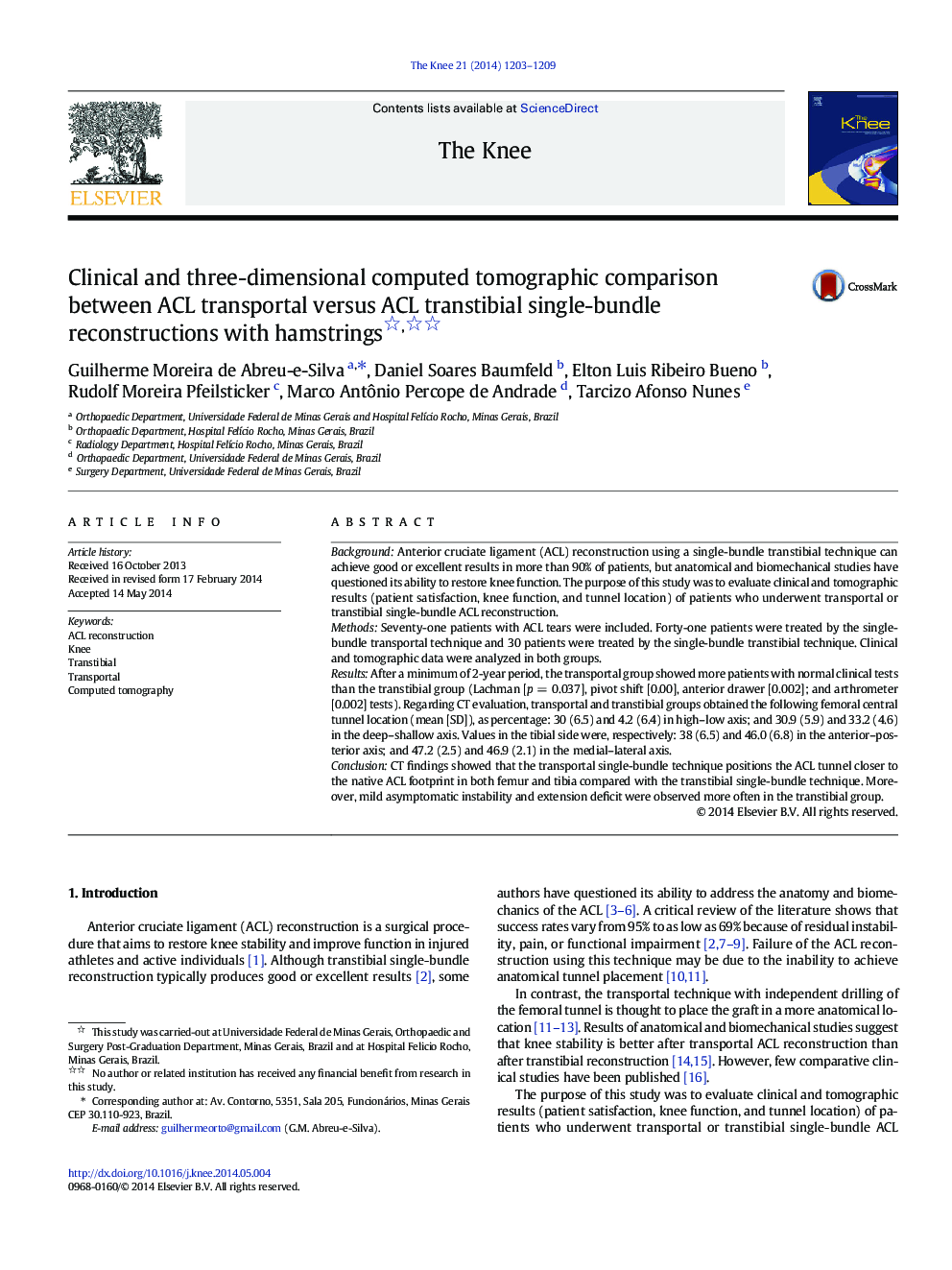| Article ID | Journal | Published Year | Pages | File Type |
|---|---|---|---|---|
| 6211362 | The Knee | 2014 | 7 Pages |
BackgroundAnterior cruciate ligament (ACL) reconstruction using a single-bundle transtibial technique can achieve good or excellent results in more than 90% of patients, but anatomical and biomechanical studies have questioned its ability to restore knee function. The purpose of this study was to evaluate clinical and tomographic results (patient satisfaction, knee function, and tunnel location) of patients who underwent transportal or transtibial single-bundle ACL reconstruction.MethodsSeventy-one patients with ACL tears were included. Forty-one patients were treated by the single-bundle transportal technique and 30 patients were treated by the single-bundle transtibial technique. Clinical and tomographic data were analyzed in both groups.ResultsAfter a minimum of 2-year period, the transportal group showed more patients with normal clinical tests than the transtibial group (Lachman [p = 0.037], pivot shift [0.00], anterior drawer [0.002]; and arthrometer [0.002] tests). Regarding CT evaluation, transportal and transtibial groups obtained the following femoral central tunnel location (mean [SD]), as percentage: 30 (6.5) and 4.2 (6.4) in high-low axis; and 30.9 (5.9) and 33.2 (4.6) in the deep-shallow axis. Values in the tibial side were, respectively: 38 (6.5) and 46.0 (6.8) in the anterior-posterior axis; and 47.2 (2.5) and 46.9 (2.1) in the medial-lateral axis.ConclusionCT findings showed that the transportal single-bundle technique positions the ACL tunnel closer to the native ACL footprint in both femur and tibia compared with the transtibial single-bundle technique. Moreover, mild asymptomatic instability and extension deficit were observed more often in the transtibial group.
